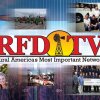Just like you, cattle producers know all about the high cost of beef.
The prices are high at the grocery store, but growing that T-Bone or sirloin steak is also very expensive.
However, the use of ultrasound may make growing beef more efficient.
It starts like any other ultrasound—first, a little shaving, then a little lubricant.
“Just a little old regular vegetable oil. That makes good uses of kitchen cooking supplies,” said North Dakota State University Extension beef cattle specialist Carl Dahlen.
But that’s where the similarities between cattle and humans stop.
“The first one is between the 12th and 13th rib, and then we go right over the top of that loin. And for those of you at home, this would be right where your rib eye steaks come from. So based on the different tissue densities, we can differentiate between different muscling patterns and between fat and muscle,” said Dahlen.
They can determine if that steer is even able to produce the United States Department of Agriculture (USDA) prime even before it goes into the feedlot.
It will get the best feed to maximize its profitability or added value if it can. The animals that aren’t genetically predisposed to growing the best meat won’t have the best feed wasted. That will save the farmer money and grow that juicy T-Bone or roast in the most efficient way.
“And with the most efficient care, with good nutrients, with good stewardship, we can turn these animals into the high-quality product our consumers demand,” said Dahlen.
Using ultrasound to determine carcass quality is not new in the meat industry, but using it to find the animals that will produce the best cuts of meat even before they go on feed is new.













